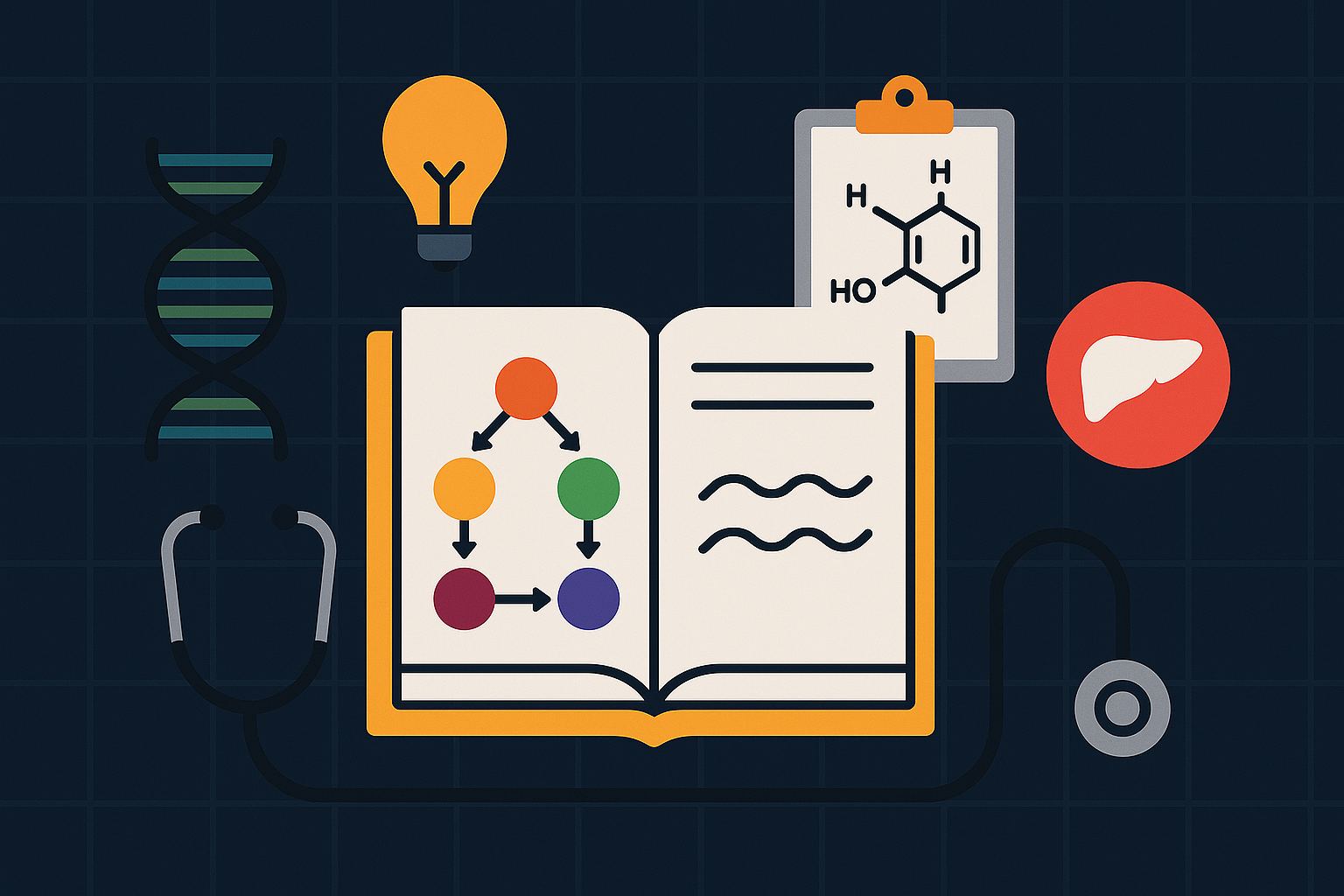Focus: Step 1 question decoding strategy — learn to
read stems, identify patterns, and think like an NBME author to raise your accuracy rate per block.
Understanding the Architecture of Step 1 Questions
Every Step 1 item is built to test reasoning, not recall. NBME authors use a predictable structure: clinical vignette → question task → answer set → rationale layer. The vignette introduces a patient scenario loaded with contextual “noise.” The task line defines what’s being tested—diagnosis, mechanism, pharmacologic action, or next step. The distractors represent logical but incorrect pathways that reveal whether a student understands mechanisms versus memorized lists.
When reading stems, pause after the first sentence and anticipate what organ system is being tested. Then, identify pivot clues—age, sex, onset, exposure, or lab value pattern. These orient you to the disease category before the question even asks it. Most errors occur when students read linearly instead of structurally. MDSteps tutors often advise “reverse-engineering” the question by first locating the ask (“Which of the following…”), then scanning for causal clues that match Step 1 blueprint domains (pathology > physiology > pharmacology). This transforms each stem from a riddle into a reproducible logic exercise. How NBME Authors Hide Clues in Plain Sight
NBME writers follow precise item-writing guidelines designed to discriminate between levels of understanding. Each clue serves a pedagogic function: some direct, others distract. Phrases like “after a viral infection” or “following antibiotic therapy” aren’t filler—they telegraph mechanisms such as immune cross-reactivity or microbiota disruption. Authors strategically place redundant data to ensure that those who know the mechanism still confirm it independently.
You can train your eye to spot high-yield signal words. Build a personal “trigger log” while practicing MDSteps QBank questions; tag stems by the phrases that consistently indicate the same diagnosis. Over time, these linguistic cues convert into automatic recognition. | Common Phrase | Likely Mechanistic Target | Blueprint Category |
|---|
| “Weeks after streptococcal pharyngitis” | Molecular mimicry | Immunopathology |
| “Child with failure to thrive and fatty stools” | Pancreatic enzyme deficiency | Gastroenterology |
| “Elderly patient with sudden confusion post-op” | Medication side effect / delirium | Pharmacology / Neurology |
Recognizing these recurring motifs turns “content review” into “pattern decoding,” a shift that correlates strongly with 250+ performance. Dissecting the Distractors: What Wrong Answers Teach You
A distractor isn’t random—it’s diagnostically informative. NBME authors craft each incorrect choice to represent a plausible misconception. For instance, in an anemia stem, “folate deficiency” may serve as a distractor to test whether you recall neurologic symptoms unique to B12 deficiency.
When reviewing missed questions in MDSteps’ Adaptive QBank, classify each error by cognitive type: - Content gap: Didn’t recall the mechanism or pathway.
- Reasoning gap: Understood content but misapplied logic (confused cause vs. correlation).
- Reading gap: Missed key pivot word (acute vs chronic).
This taxonomy lets you refine practice sessions scientifically instead of emotionally. By tracking distractor patterns over time, the MDSteps analytics dashboard automatically highlights which logic categories cost you the most points—data that is far more actionable than percent correct. Predicting the Question Task Before You Read It
The fastest test-takers predict the “question task” before reaching the final sentence. This anticipatory reading primes working memory to sort details in real time. For example, a vignette mentioning “rash, eosinophilia, and new medication” will almost certainly end with a question on hypersensitivity reactions or drug metabolism.
Train this skill by using “Stem-Stop” drills: cover the question task after the vignette and predict the ask. Then reveal it and measure prediction accuracy. Within MDSteps, you can simulate this by enabling “Predictive Mode,” which hides the final line during timed blocks. Students who master predictive framing reduce average question time by 18 % and improve retention through active hypothesis testing—a principle backed by cognitive load theory. The Logic Map: How NBME Questions Follow One of Three Blueprints
Most Step 1 stems fall into one of three logic maps: | Blueprint Type | Core Logic | Example Question Task |
|---|
| Mechanism-Based | Link finding → underlying pathway → expected outcome | “Which enzyme is deficient?” |
| Sequence-Based | Order pathophysiologic events chronologically | “What occurs first after ischemia?” |
| Principle-Based | Apply general rule to novel presentation | “Which receptor type explains this drug’s effect?” |
When you can identify the blueprint early, your brain allocates attention efficiently: mechanism questions require vertical reasoning (step-by-step), sequence questions require temporal mapping, and principle questions call for analogical reasoning. Practice categorizing every MDSteps question into one of these three blueprints—doing so trains diagnostic reasoning under exam pressure. How to Reverse-Engineer NBME Logic During Review
Instead of merely checking explanations, trace how the question writer expected you to think. Ask: - What knowledge domain was targeted?
- Which sentence in the stem was the decisive clue?
- What misconception was each distractor built to expose?
This meta-analysis reframes review sessions as author deconstruction. Within MDSteps, the “Author’s Key” feature visualizes this logic by showing the hidden reasoning path per question, helping you build intuition for test-writer psychology. Consistent use of reverse-engineering transforms scattered memorization into procedural fluency—a predictor of Step 1 success. Integrating Decoding Practice Into Your Study Schedule
Students often devote 90 % of time to content and only 10 % to decoding skills. Yet, high scorers flip that ratio late in prep. Embed one daily decoding session: - 1 block (40 min) in MDSteps QBank under timed mode
- 15 min review identifying stem structure and distractor logic
- 5 min reflective entry: “What pattern did I miss?”
Incorporate MDSteps’ auto-generated flashcards from misses to reinforce mechanism-level reasoning. Over 4 weeks, this workflow creates a cognitive schema library—your internal Step 1 pattern bank—reducing cognitive load when facing novel stems. Remember: decoding is a skill; it grows with deliberate iteration, not passive exposure. Rapid-Review Checklist: How to Read Like an NBME Author
- Scan the final line first to define the task.
- Locate the pivot clues (age, timeline, exposure).
- Predict blueprint type: mechanism, sequence, or principle.
- Cross-check distractors for conceptual symmetry.
- Tag recurring trigger phrases in MDSteps QBank for pattern tracking.
- During review, ask: “What was this question actually testing?”
When you consistently analyze stems this way, Step 1 becomes less of a guessing game and more of a predictable, teachable algorithm—exactly what the NBME intended for those who truly understand medicine’s logic.
References: 1. National Board of Medical Examiners. *Item Writing Manual: Constructing Written Test Questions for the Basic and Clinical Sciences.* 2. Sweller J. *Cognitive Load Theory and Instructional Design Principles.* 3. MDSteps Internal Data, Adaptive QBank User Analytics 2025. 4. Roediger HL & Karpicke JD. *Test-Enhanced Learning: Taking Memory Tests Improves Long-Term Retention.* Psychological Science.






